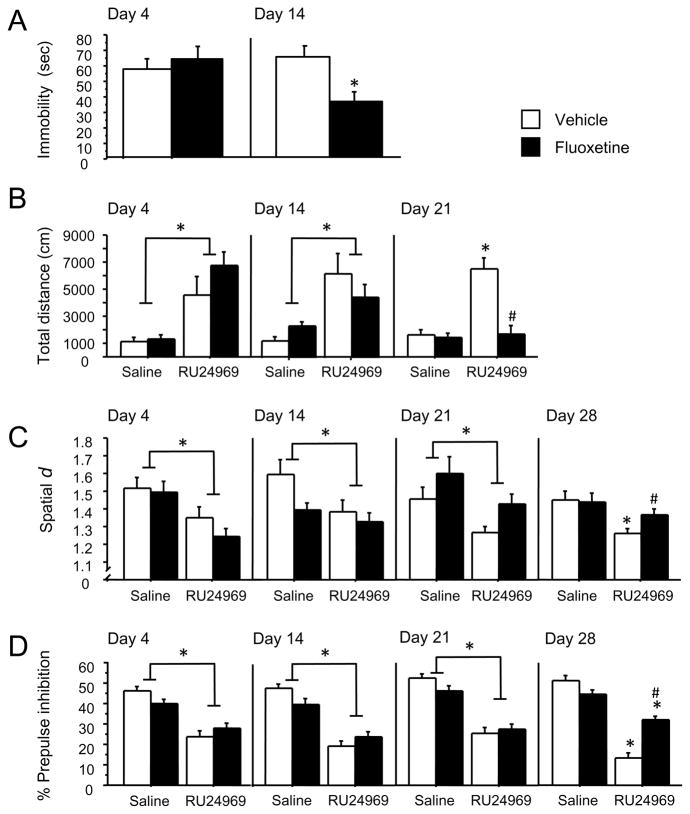Figure 3.
Time-course for fluoxetine to reduce OCD-like behavior versus depression-like behavior. Mice receiving fluoxetine treatment (0 or 10 mg/kg/d) and were tested for immobility in the FST (A). Mice receiving the same fluoxetine treatment were injected with the 5-HT1BR agonist RU24969 (0 or 10 mg/kg), and tested for total distance traveled (B) and perseveration (C) in the open field, and prepulse inhibition (D). Separate groups of mice (n=15/group for all experiments) were used for each time point (day 4, 14, 21, 28 and 56 of fluoxetine treatment) and behavioral paradigm (FST, open field, PPI). Data are shown through the first time-point at which SRI effects were observed. All effects remained through day 56 (data not shown). Results are presented as means ± s.e.m. Asterisk (*) indicates P <0.05 compared to saline. Pound sign (#) indicates P <0.05 compared to chronic vehicle treatment.

